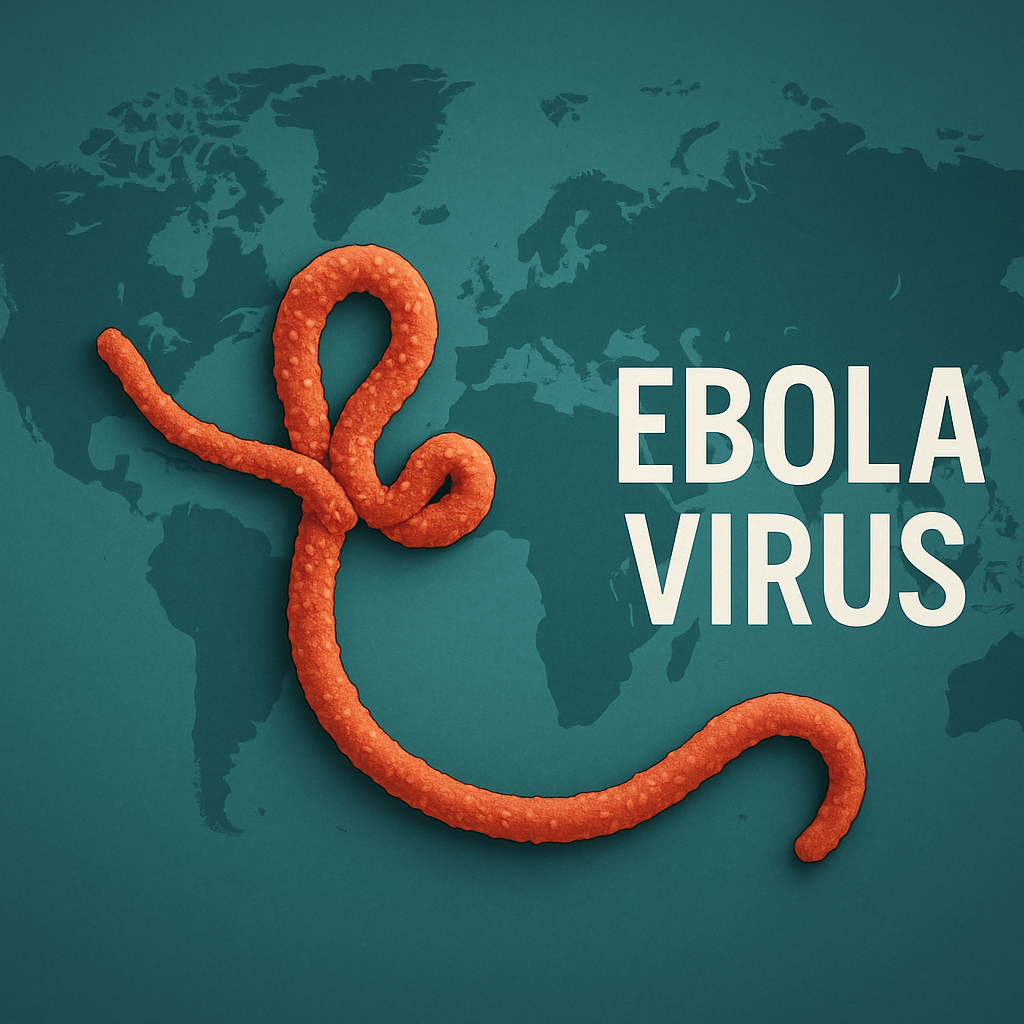Ebola virus disease (EVD) is a rare but extremely serious illness in humans. According to the World Health Organization (WHO), Ebola has an average fatality rate of about 50%, with some outbreaks reaching as high as 90%. Since its discovery in 1976 near the Ebola River in the Democratic Republic of Congo, Ebola has triggered multiple outbreaks in Africa, leaving behind devastating health, social, and economic impacts.
This blog will walk you through what Ebola is, its causes, stages, types, symptoms, diagnosis, prevention strategies, and global consequences — supported by insights from WHO, CDC, Mayo Clinic, and NIAID.
What is Ebola?
Ebola is caused by infection with viruses from the Filoviridae family. The Centers for Disease Control and Prevention (CDC) notes that Ebola spreads to humans from wild animals, particularly fruit bats, and then transmits between people through direct contact with bodily fluids or contaminated surfaces.
Causes and Transmission
Ebola spreads when a person comes into contact with:
- Blood, saliva, sweat, urine, or vomit of an infected person.
- Surfaces, needles, or bedding contaminated with the virus.
- Bushmeat from infected animals such as monkeys or chimpanzees.
- Unsafe burial practices, where mourners touch the deceased.
Fact check: Both WHO and CDC confirm that Ebola does not spread through the air, unlike flu or COVID-19.
Stages of Ebola Disease Progression
Medical research identifies four main stages:
- Incubation (2–21 days): Virus multiplies silently, no symptoms.
- Early Stage: Fever, weakness, and headache appear.
- Progressive Stage: Diarrhea, vomiting, abdominal pain, rash, and organ dysfunction.
- Critical Stage: Internal/external bleeding, organ failure, and shock — often fatal.
Types of Ebola Virus
According to NIAID, there are five recognized Ebola virus species:
- Zaire ebolavirus – deadliest, responsible for most outbreaks.
- Sudan ebolavirus – severe disease but slightly lower fatality rate.
- Bundibugyo ebolavirus – outbreaks in Uganda and Congo.
- Taï Forest ebolavirus – extremely rare, only one recorded case.
- Reston ebolavirus – affects animals, not humans.
Symptoms of Ebola
The Mayo Clinic highlights that early Ebola symptoms resemble malaria, typhoid, or flu. Common signs include:
- High fever and chills
- Headache, sore throat, and muscle pain
- Fatigue and weakness
- Nausea, vomiting, and diarrhea
- Stomach pain and loss of appetite
- Red eyes and rash
Severe cases: internal/external bleeding, multi-organ failure.
Diagnosis
WHO recommends laboratory confirmation through:
- PCR (Polymerase Chain Reaction): Detects viral genetic material.
- ELISA: Identifies viral antigens/antibodies.
- Blood tests: To rule out malaria and other infections.
Since Ebola mimics other tropical diseases, lab testing is essential.
Treatment Without Medicine
Currently, no permanent cure exists, but supportive care boosts survival. WHO suggests:
- Rehydration with IV or oral fluids.
- Maintaining oxygen and blood pressure.
- Treating secondary infections with antibiotics.
- Providing emotional and psychological support.
The rVSV-ZEBOV vaccine has proven highly effective in outbreak control and is recommended in high-risk areas.
Prevention: Reducing the Risk
According to WHO and CDC, prevention is the strongest defense:
- Avoid direct contact with infected individuals.
- Wash hands frequently with soap and clean water.
- Ensure healthcare workers use PPE (Personal Protective Equipment).
- Practice safe and respectful burial procedures.
- Educate communities and raise awareness.
- Vaccinate in outbreak-prone regions.
Healthy Diet for Recovery & Immunity
Nutrition strengthens the body’s ability to recover:
- Fruits & Vegetables: Vitamin C & A (boost immunity and healing).
- Proteins: Fish, eggs, legumes for tissue repair.
- Hydration: ORS, soups, clean water to replace lost fluids.
- Whole grains: Steady energy supply.
- Healthy fats: Nuts, seeds, avocados for strength.
Risk Factors
WHO identifies high-risk groups:
- Healthcare workers without protective gear.
- Family members caring for patients.
- Residents of outbreak-prone zones.
- Communities practicing unsafe burials.
- Hunters or handlers of wild animals.
Global Impact of Ebola
The 2014–2016 West Africa outbreak was the deadliest, killing over 11,000 people. WHO reported:
- Education, trade, and healthcare systems collapsed.
- Survivors faced stigma and trauma.
- Fragile economies suffered huge losses.
Although Ebola is largely concentrated in Africa, its global risk remains due to international travel. WHO and CDC now maintain rapid response strategies and vaccination programs to prevent global spread.
Conclusion
Ebola is one of the world’s deadliest viral diseases, but not undefeatable. With vaccines, advanced medical care, prevention strategies, and global cooperation, survival rates are steadily improving.
By spreading awareness and strengthening healthcare systems, we can reduce the risks of future outbreaks.
FAQs
1. Can Ebola spread through air?
No. Ebola spreads only through direct contact with body fluids.
2. Is Ebola curable?
Not yet, but supportive treatment and vaccines greatly improve survival.
3. Where was Ebola first discovered?
In 1976, near the Ebola River, Democratic Republic of Congo.
4. What is the fatality rate?
Between 25% and 90%, depending on the outbreak and care access.
5. Can Ebola spread worldwide?
Yes, but strict screenings, vaccines, and global monitoring keep risks low.
References
- World Health Organization (WHO): Ebola Virus Disease
- Centers for Disease Control and Prevention (CDC): About Ebola Virus Disease
- Mayo Clinic: Ebola Virus Symptoms & Causes
- National Institute of Allergy and Infectious Diseases (NIAID): Ebola Research
READ OUR BLOG ON
Polio Virus Disease Blog → https://newsarmour.com/polio-causes-symptoms-prevention-eradication-guide/






